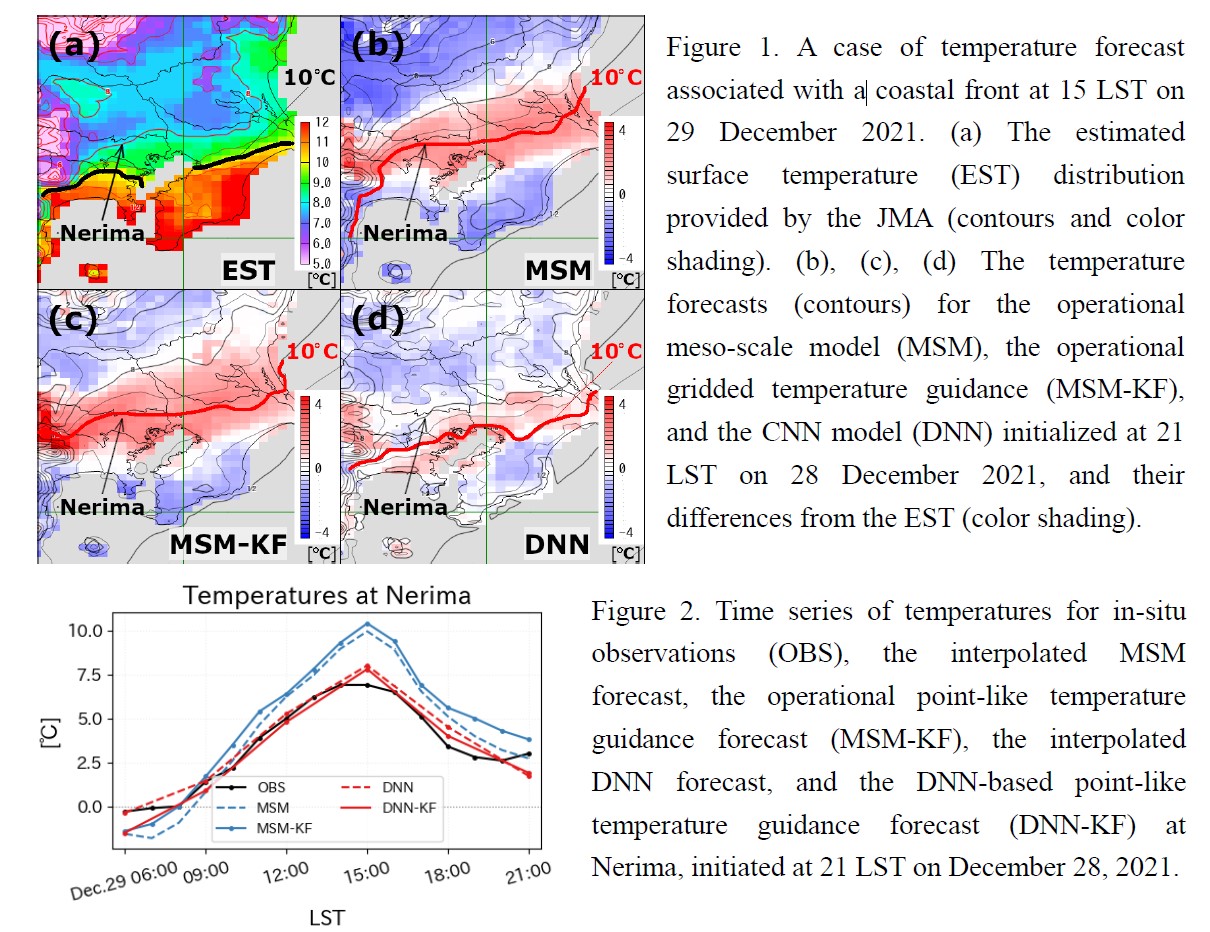JMSJ Highlights
Editor's Highlight : Inoue et al. (2024)
Inoue, T., T. T. Sekiyama, and A. Kudo, 2024: Development of a temperature prediction method combining deep neural networks and a Kalman filter. J. Meteor. Soc. Japan, 102.
https://doi.org/10.2151/jmsj.2024-020.
Graphical Abstract
Special Edition on Research on "Heavy rainfall and snowfall, and moisture transport"
Editor in charge: Dr. Daisuke Matsuoka
-
I highlight this paper that described an advanced post-processing method for output from numerical weather forecast models by combining the Kalman Filter and machine learning.
- This study combined the CNN-based bias correction scheme with the JMA’s operational KF algorithm.
- Verification results showed that our method outperformed both the DNN and the JMA's operational temperature guidance forecast.
- The KF has advantages of online learning that the DNN does not have. The verification demonstrated that the KF was able to follow the bias changes for NWP model updates.

Abstract
Numerical weather forecast models have biases caused by insufficient grid resolution and incomplete physical processes, especially near the land surface. Therefore, the Japan Meteorological Agency (JMA) has been operationally post-processing the forecast model outputs to correct biases. The operational post-processing method uses a Kalman filter (KF) algorithm for surface temperature prediction. Recent reports have shown that deep convolutional neural networks (CNNs) outperform the JMA operational method in correcting temperature forecast biases. This study combined the CNN-based bias correction scheme with the JMA operational KF algorithm. We expected that the combination of CNNs and a KF would improve the post-processing performance, as the CNNs modify large horizontal structures, and then, the KF corrects minor spatiotemporal deviations. As expected, we confirmed that the combination outperformed both CNNs and the KF alone. This study demonstrated the advantages of the new method in correcting coastal fronts, heat waves, and radiative cooling biases.






